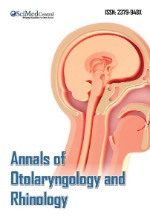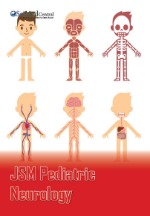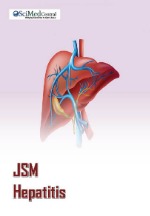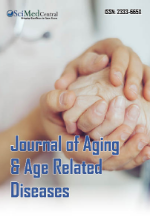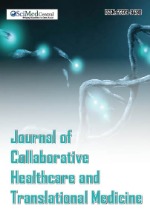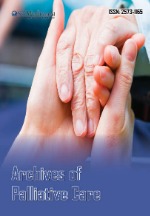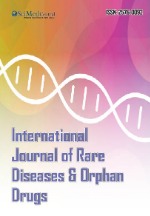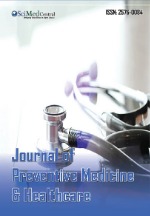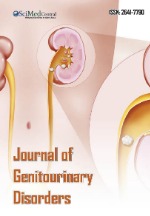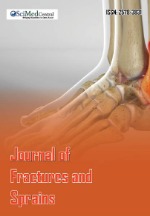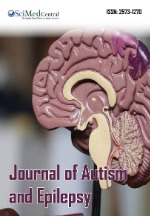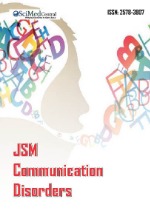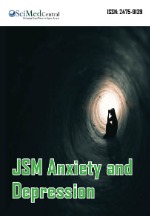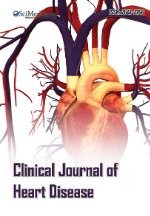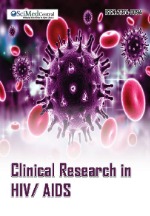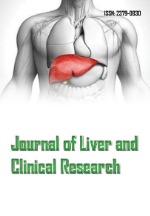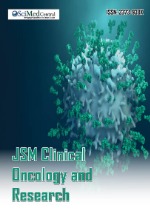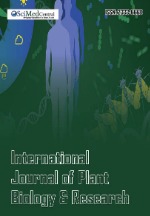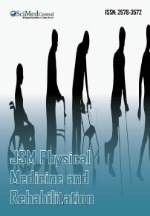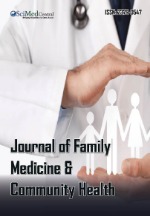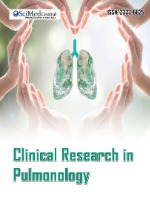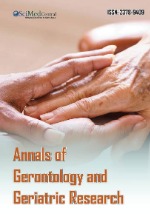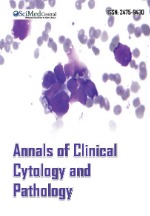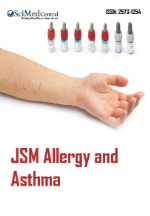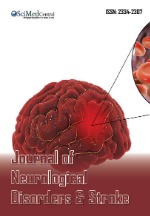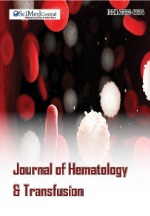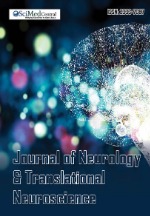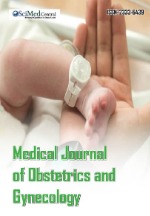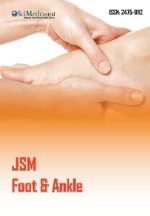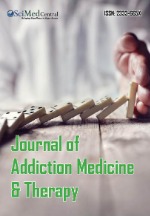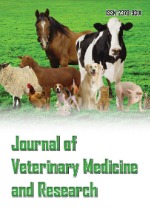Vaccine Hesitancy Drivers and Interventions for Improved Immunization Coverage in Developing Nations
- 1. Department of Community Medicine, Bayelsa Medical University, Nigeria
- 2. Department of Microbiology, Bayelsa Medical University, Nigeria
Abstract
Vaccine hesitancy presents a critical barrier to achieving optimal immunization coverage in developing nations, undermining efforts to combat preventable diseases. This paper identifies key drivers of vaccine hesitancy and evaluates interventions that can improve immunization rates in resource-limited settings. Cultural and structural factors contribute significantly to low vaccination rates, including widespread misinformation, entrenched cultural beliefs, and inadequate health infrastructure. Insights from qualitative studies conducted in regions such as Sub-Saharan Africa and South Asia underscore the complexity of community perceptions surrounding vaccines. These studies highlight the interplay between mistrust, accessibility issues, and socioeconomic factors influencing vaccine acceptance. Successful interventions in developing countries provide valuable lessons. Campaigns like those led by Gavi and other global health initiatives demonstrate the effectiveness of tailored strategies in overcoming resistance, such as community engagement and partnerships with local leaders. Additionally, advancements in mobile health technologies have shown promise in countering misinformation and enhancing public awareness. By leveraging SMS reminders, telemedicine, and social media, healthcare providers can improve outreach and reinforce pro-vaccine messaging. This equitable vaccination coverage aligns with Sustainable Development Goal 3 (Good Health and Well-being), highlighting the broader implications of addressing vaccine hesitancy for global health equity. Therefore, a coordinated approach that integrates cultural sensitivity, technological innovation, and robust health systems is essential for building trust and sustaining immunization access. Continued efforts to address vaccine hesitancy are crucial to achieving long-term public health resilience in low-income settings.
Keyword
- Vaccine hesitancy; Immunization coverage; Developing nations; Misinformation; Cultural beliefs; Health infrastructure; SDG 3; Public health equity
CITATION
Sawyer WE, Izah SC (2024) Vaccine Hesitancy Drivers and Interventions for Improved Immunization Coverage in Developing Nations. Ann Community Med Pract 9(2): 1063.
INTRODUCTION
Vaccine hesitancy poses a significant challenge to achieving optimal immunization coverage in low-income settings, particularly in regions such as Sub-Saharan Africa and parts of Asia. The World Health Organization (WHO) defines vaccine hesitancy as a delay in acceptance or refusal of vaccines despite their availability, a phenomenon influenced by various factors, including complacency, convenience, and confidence in the vaccines themselves [1]. In Sub-Saharan Africa, vaccine hesitancy is compounded by a complex interplay of cultural, social, historical, and political factors. A systematic review highlighted that many individuals in this region harbor doubts about the efficacy and safety of vaccines, often stemming from historical mistrust of foreign-led vaccination campaigns [1,2]. This mistrust is particularly pronounced in countries like Nigeria and Kenya, where past experiences with health interventions have led to skepticism about new vaccines [1,3].
In Asia, vaccine hesitancy is also prevalent, with significant variations across different countries. For example, a study indicated that vaccine acceptance rates in Pakistan were notably low, attributed to negative historical experiences with vaccination programs [4]. Similarly, in Bangladesh, while acceptance rates were relatively high, concerns about vaccine safety and efficacy still lingered among certain demographics [5]. This suggests that while some regions may exhibit high levels of acceptance, underlying hesitancy remains a barrier to achieving comprehensive vaccination coverage.
Understanding the factors influencing vaccine acceptance is crucial for developing effective interventions. Research indicates that demographic factors such as age, education level, and marital status significantly correlate with vaccine acceptance [6,7]. For instance, younger individuals in their 20s have been found to exhibit higher levels of hesitancy compared to older populations, a trend that is consistent across various studies [7,8]. In Ghana, a survey revealed that a majority of parents intended to vaccinate their children against COVID-19, yet a substantial minority expressed hesitancy, highlighting the need for targeted outreach and education [9]. This underscores the importance of tailoring messaging to address specific concerns and misconceptions prevalent within different communities.
Moreover, the role of healthcare workers (HCWs) in influencing vaccine acceptance cannot be overstated. HCWs are often viewed as trusted sources of health information, and their attitudes towards vaccination can significantly impact community perceptions [10]. In a study conducted in Kenya, it was observed that HCWs who had received prior vaccinations were more likely to advocate for COVID-19 vaccination, thereby enhancing community acceptance [3,10]. This relationship emphasizes the necessity of ensuring that HCWs themselves are well-informed and confident in the vaccines they promote.
The COVID-19 pandemic has further complicated the landscape of vaccine hesitancy. The emergence of misinformation and conspiracy theories surrounding the virus and its vaccines has fueled skepticism in both Sub-Saharan Africa and Asia [11- 13]. A systematic review noted that safety concerns and perceived lack of effectiveness were major predictors of vaccine hesitancy among adolescents in Sub-Saharan Africa [7]. In contrast, in some Asian countries, the prevalence of conspiracy theories regarding vaccines has been linked to lower acceptance rates, highlighting the need for comprehensive public health campaigns to counteract misinformation [13].
Addressing vaccine hesitancy requires a multifaceted approach that considers the unique cultural and social contexts of different regions. In Sub-Saharan Africa, targeted information campaigns that bolster confidence in vaccine safety and efficacy are essential. Evidence suggests that individuals who receive clear, consistent information about vaccines are more likely to accept them [8]. For example, community engagement initiatives that involve local leaders and influencers can help dispel myths and build trust in vaccination programs [8,11,12]. Similarly, in Asia, leveraging social media platforms to disseminate accurate information and counter misinformation could enhance vaccine acceptance among younger populations who are more active online [13].
Furthermore, the timing of vaccination campaigns is critical. Studies have shown that vaccine acceptance can fluctuate based on the perceived urgency of the health threat [7,8]. In the context of COVID-19, as the pandemic progressed, many individuals became more receptive to vaccination, particularly when faced with rising case numbers and mortality rates [7]. This dynamic underscores the importance of adapting public health strategies to align with communities’ evolving perceptions of risk.
The paper focuses on identifying and addressing the drivers of vaccine hesitancy in developing nations to improve immunization coverage. It highlights key cultural, structural, and informational barriers, such as misinformation, inadequate health infrastructure, and deeply rooted cultural beliefs. Successful interventions, including community engagement, targeted communication, and leveraging mobile health technologies, are explored as practical solutions. Emphasizing alignment with Sustainable Development Goal 3, the paper underscores the importance of multifaceted strategies to reduce preventable diseases and enhance global health outcomes.
CULTURAL AND STRUCTURAL DRIVERS OF VACCINE HESITANCY IN DEVELOPING NATIONS
Table 1 outlines vaccine hesitancy’s cultural and structural drivers, including misinformation, cultural beliefs, and inadequate health infrastructure.
Table 1: Cultural and structural drivers of vaccine hesitancy and associated public health outcomes
|
Driver |
Details |
Public Health Outcome |
|
Misinformation |
- Rapid spread of false information about vaccine safety. |
- Reduced vaccine coverage and resurgence of preventable diseases. |
|
- Amplification via social media, especially in low-literacy settings. |
- Distrust in health systems, delaying immunization campaigns. |
|
|
- Persistent myths about vaccine harm (e.g., infertility, toxins). |
- Increased morbidity and mortality from vaccine-preventable diseases (VPDs). |
|
|
Cultural beliefs |
- Religious opposition to vaccines perceived as conflicting with doctrine. |
- Community-wide resistance to vaccination efforts, reducing herd immunity. |
|
- Infertility myths targeting maternal and childhood vaccines. |
- Lower immunization rates in key demographic groups (e.g., women and children). |
|
|
- Preference for traditional remedies over modern vaccines. |
- Continued transmission of preventable diseases in vulnerable populations. |
|
|
Inadequate health infrastructure |
- Limited access to healthcare facilities in rural/remote areas. |
- Geographic disparities in immunization coverage, with rural areas under-served. |
|
- Weak cold chain systems affecting vaccine efficacy. |
- Vaccines rendered ineffective, increasing outbreak risk. |
|
|
- Insufficient and untrained healthcare personnel to manage vaccination programs. |
- Poor service delivery reducing trust and uptake in health services. |
|
|
- Poor organization and communication during vaccination campaigns. |
- Negative public perception leading to further vaccine hesitancy. |
Misinformation, such as the rapid spread of false vaccine-related claims and myths, erodes trust in healthcare systems, particularly in low-literacy communities. Cultural beliefs, including religious and traditional conflicts, along with inadequate health infrastructure, such as limited access to services and workforce deficits, further contribute to vaccine hesitancy and undermine public health outcomes.
Misinformation and its Impact
The proliferation of misinformation through social media platforms has emerged as a critical factor contributing to vaccine hesitancy in developing regions, particularly in Sub- Saharan Africa and parts of Asia. In Sub-Saharan Africa, studies indicate that misinformation regarding the safety and efficacy of vaccines has significantly influenced public perception, leading to decreased vaccination rates. For instance, a systematic review highlighted that only 41% of children in Sub-Saharan Africa received the second dose of the measles vaccine, indicating a substantial gap in immunization coverage attributed to misinformation and distrust in health systems [14]. Similarly, in Asia, particularly in countries like India and Pakistan, the spread of myths surrounding vaccines-such as the belief that they cause infertility-has been documented, further exacerbating vaccine hesitancy [15].
The susceptibility of populations with lower education and health literacy to misinformation is particularly concerning. Research shows that communities with limited access to reliable health information are more likely to accept false vaccine narratives, which can lead to significant public health challenges [16]. For example, in rural India, the limited ability of individuals to critically evaluate health information has made them more vulnerable to misleading claims about vaccines [17]. This trend is mirrored in various Sub-Saharan African nations, where historical unethical medical practices have fostered a pervasive distrust in modern healthcare systems, further complicating efforts to increase vaccine uptake [18].
Moreover, the amplification of vaccine myths through social media has not only diminished public trust in healthcare systems but has also created a cycle of misinformation that is difficult to break. In Kenya, for instance, the dissemination of false information regarding the HPV vaccine has led to significant hesitancy among parents despite the vaccine’s proven efficacy in preventing cervical cancer [17]. This situation is exacerbated by the historical context of medical experimentation in Africa, which has left a legacy of skepticism towards health interventions perceived as foreign or imposed [18].
Cultural Beliefs and Resistance
Cultural beliefs are vital in shaping attitudes toward vaccination in Sub-Saharan Africa and Asia. In many communities, vaccines are viewed as incompatible with traditional practices or religious beliefs. For example, in Nigeria, some groups perceive vaccination campaigns as threatening their cultural identity, leading to resistance against immunization efforts [19]. Similarly, certain religious factions have actively opposed vaccination in parts of India, viewing it as contrary to their spiritual beliefs [20]. This cultural resistance is often reinforced by local leaders who propagate anti-vaccine sentiments, further complicating public health initiatives aimed at increasing vaccine acceptance.
Prioritizing traditional remedies over modern medical interventions is another significant barrier to vaccine acceptance. In Sub-Saharan Africa, many communities rely on traditional healers for health advice, undermining vaccination campaigns’ credibility [21]. This is particularly evident in rural areas where access to healthcare facilities is limited, and traditional beliefs dominate health-seeking behaviors [22]. In Asia, similar patterns are observed, where cultural norms often dictate health practices, leading to a preference for herbal treatments over vaccinations [23].
Persistent rumors regarding vaccine-related infertility, especially concerning maternal and childhood immunizations, have also contributed to vaccine hesitancy in both regions. In Sub-Saharan Africa, misinformation about the HPV vaccine causing infertility has led to significant declines in vaccination rates among adolescent girls [24]. In Asia, similar fears have been documented, with parents expressing concerns about the long- term effects of vaccines on their children’s reproductive health [25]. The influence of community leaders who oppose vaccination based on cultural beliefs further compounds these issues, as their authority can sway public opinion against vaccination efforts [26].
Inadequate Health Infrastructure
The health infrastructure in developing nations often presents significant challenges that hinder vaccine uptake.
Geographic barriers severely limit access to vaccination services, particularly in rural or remote areas. In Sub-Saharan Africa, logistical challenges such as poor road conditions and inadequate transportation systems have been identified as critical barriers to immunization [27]. For instance, a study in Zambia revealed that many rural communities are far from healthcare facilities, making it difficult for families to access vaccines [28]. Similarly, in India, the lack of infrastructure in remote areas has resulted in low vaccination coverage, particularly for childhood immunizations [29].
Insufficient healthcare facilities further exacerbate the challenges faced in implementing large-scale vaccination programs. In many Sub-Saharan African countries, healthcare systems are often under-resourced and need help to meet the demands of comprehensive vaccination campaigns [30]. This is mirrored in parts of Asia, where healthcare facilities may lack the necessary equipment and trained personnel to administer vaccines effectively [31]. The shortage of trained healthcare workers and overburdened staff can lead to inefficiencies in vaccine delivery, further undermining public trust in vaccination efforts [32].
Weak cold chain systems and shortages in vaccine supply due to poor supply chain management can compromise the potency and availability of vaccines. In Sub-Saharan Africa, inadequate refrigeration facilities are a significant barrier to maintaining vaccine efficacy, particularly in remote areas [33]. Similarly, in Asia, logistical challenges related to vaccine storage and distribution have been documented, leading to concerns about the reliability of vaccination programs [34]. Poorly organized vaccination campaigns, characterized by long waiting times and unmet expectations, can reinforce vaccine hesitancy and diminish community confidence in health authorities [35].
Addressing the Multifaceted Drivers of Vaccine Hesitancy
A multifaceted approach targeting cultural and structural barriers is essential to address vaccine hesitancy in developing nations effectively. Strategies should prioritize combating misinformation through targeted social media campaigns that promote accurate health information. In Sub-Saharan Africa, community empowerment initiatives have been proposed to engage all sectors of society in promoting vaccine literacy and building confidence in vaccination [36]. Similarly, in Asia, leveraging local influencers and community leaders to disseminate accurate information about vaccines can help counteract the effects of misinformation.
Engaging with religious and community leaders to align vaccination efforts with cultural beliefs is crucial for overcoming resistance. In Nigeria, for example, involving traditional leaders in vaccination campaigns has shown promise in increasing acceptance rates. Similar strategies incorporating local customs and beliefs into health messaging in India have effectively improved vaccine uptake. Strengthening health infrastructure, including improving access, supply chain management, and healthcare workforce capacity, is vital to ensure the reliable and equitable delivery of vaccines.
Continuous monitoring and adaptation of vaccination programs to address local communities’ evolving needs and concerns are essential for sustained success. In Sub-Saharan Africa, ongoing assessments of community attitudes towards vaccination can inform targeted interventions that address specific barriers. Adapting vaccination strategies to reflect local cultural contexts has enhanced Asian acceptance and uptake.
COMMUNITY PERCEPTION STUDIES
Vaccine hesitancy in developing nations, particularly in Sub- Saharan Africa and South Asia, is a multifaceted issue influenced by historical, cultural, and social factors. In Sub-Saharan Africa, the legacy of colonialism has fostered a deep-seated mistrust in Western medical practices, which significantly impacts community perceptions of vaccination programs. This mistrust is often compounded by a lack of transparent communication from health authorities, leading to skepticism about the safety and efficacy of vaccines [37]. For instance, studies have shown that communities are more likely to reject vaccination initiatives when they perceive them as foreign impositions rather than locally relevant health interventions [37]. This skepticism necessitates the development of culturally sensitive communication strategies that resonate with local beliefs and practices, fostering trust and increasing vaccine uptake [37].
In South Asia, particularly in countries like Bangladesh and Nepal, gender norms and patriarchal structures significantly hinder women’s autonomy in making healthcare decisions. Women often find themselves in subordinate positions within their households, which restricts their ability to advocate for their health and their children [38]. Research indicates that when women lack decision-making power, vaccination rates for children tend to decline, as mothers may not be able to prioritize immunizations without the consent of male family members [39]. Empowering women through education and community engagement can enhance their decision-making capacity, improving their families’ health outcomes [38]. Programs that focus on educating both men and women about the importance of vaccinations can help shift societal norms and increase acceptance of immunization [39].
Moreover, concerns about vaccine side effects and past medical injustices contribute to widespread hesitancy across various regions. Individuals often fear adverse reactions, which can be exacerbated by historical exploitation in medical research [37]. For example, in both Sub-Saharan Africa and South Asia, past unethical medical trials have left a lingering distrust that affects current vaccination efforts [37]. Health authorities must prioritize transparent communication about vaccine safety and efficacy to address these concerns and engage in open dialogues about past injustices to rebuild community trust [37]. Initiatives that include community health workers (CHWs) have proven effective in bridging the gap between health services and the public, as they can provide tailored information and support to address specific community concerns [40].
Community health worker interventions have successfully improved immunization coverage in resource-poor settings. By leveraging local knowledge and relationships, CHWs can effectively disseminate vaccination information and address community misconceptions [40]. Integrating immunization services with other health interventions, such as maternal and child health programs, can also enhance vaccination access and demand [40]. For instance, in Uganda, studies have shown that when maternal health services are combined with immunization efforts, there is a significant increase in vaccination rates among children [41]. This integrated approach improves health outcomes and fosters a sense of community ownership over health initiatives.
Furthermore, systematic reviews have highlighted the effectiveness of demand-side interventions, such as social mobilization and financial incentives, in improving childhood vaccine uptake in low- and middle-income countries [42]. These strategies can help mitigate barriers to access and encourage families to prioritize vaccinations for their children [42]. However, it is crucial to better standardize reporting methods in immunization costing studies to understand these interventions’ financial implications and overall effectiveness [42]. By establishing a clearer picture of costs and benefits, policymakers can make more informed decisions regarding resource allocation for vaccination programs.
SUCCESSFUL INTERVENTIONS IN DEVELOPING COUNTRIES
In recent years, the issue of vaccine hesitancy has emerged as a significant barrier to achieving optimal immunization coverage in developing regions, particularly in Sub-Saharan Africa and parts of Asia. Successful interventions to combat this hesitancy have been implemented through various programs, notably those led by Gavi, the Vaccine Alliance. These initiatives strengthen supply chains, foster partnerships with local governments and NGOs, and employ community health workers to enhance vaccine uptake. For instance, in Nigeria, the door-to-door polio vaccination campaigns have mobilized local volunteers, significantly reducing polio transmission rates, while in India, the Pulse Polio Initiative has effectively reached marginalized populations, demonstrating the critical role of community engagement in vaccination efforts [1,43].
Vaccine hesitancy is characterized by delays in acceptance or outright refusal of vaccines despite their availability, and it poses a considerable challenge to public health initiatives in developing countries [44]. In Sub-Saharan Africa, vaccine hesitancy is influenced by a myriad of factors, including cultural beliefs, historical mistrust of health systems, and misinformation regarding vaccine safety [45,46]. For example, a systematic review highlighted that political allegiance and misinformation significantly impacted vaccine acceptance rates in Ghana, revealing the complex interplay of social dynamics and health behaviors [47]. Similarly, parental concerns about vaccine safety and efficacy have been identified in rural Tanzania as significant barriers to immunization, underscoring the need for tailored communication strategies [47].
One of the key strategies employed by Gavi involves the introduction of community health workers who serve as trusted local figures. These workers are essential in bridging cultural divides and enhancing public understanding of vaccines [6]. In Kenya, community health workers have been instrumental in addressing vaccine hesitancy by providing education and answering questions about cultural or religious beliefs that may hinder vaccination efforts [48]. This localized approach fosters trust and encourages community members to engage with health services, improving vaccine confidence [2].
Targeted communication campaigns are another essential component of Gavi’s strategy to counter misinformation and enhance vaccine uptake. These campaigns aim to provide accurate, science-based information to communities, addressing the root causes of vaccine hesitancy, such as distrust in health institutions and the spread of misinformation [3]. For instance, in response to the COVID-19 pandemic, various countries in Sub-Saharan Africa have launched campaigns to educate the public about vaccine safety and efficacy, aiming to dispel myths and build confidence in vaccination programs [11,49]. These campaigns’ effectiveness is evident in individuals’ increased willingness to accept vaccines when provided with precise and reliable information [12].
Mass vaccination drives have also proven to be effective in improving immunization coverage. The door-to-door polio vaccination campaigns in Nigeria exemplify this approach, where millions of volunteers have been mobilized to ensure comprehensive coverage [7]. These campaigns have reduced polio cases significantly and highlighted the importance of tailoring interventions to local contexts and addressing community- specific barriers to vaccination [50]. Similarly, India’s Pulse Polio Initiative has reached remote and marginalized communities, contributing to the country’s progress toward eradicating polio [51]. Such initiatives demonstrate the power of coordinated efforts and community involvement in overcoming vaccine hesitancy and improving public health outcomes.
In Asia, similar challenges and strategies can be observed. For instance, in India, the government has implemented extensive vaccination campaigns that leverage community health workers to educate families about the importance of immunization. The success of these campaigns is evident in the increased immunization rates among children, particularly in rural areas where access to healthcare is limited [52]. Additionally, targeted communication efforts have been crucial in addressing misinformation and cultural beliefs that contribute to vaccine hesitancy in various regions of Asia [53].
Moreover, the experience of countries like Bangladesh and Indonesia illustrates the importance of community engagement in vaccination efforts. In Bangladesh, local NGOs have played a vital role in mobilizing communities and providing education about vaccine safety, resulting in higher acceptance rates among parents [54].. Similarly, in Indonesia, the government has partnered with religious leaders to promote vaccination, effectively addressing cultural concerns and enhancing public trust in immunization programs [55]. These examples underscore the necessity of context-specific strategies that consider each region’s unique cultural and social dynamics.
The multifaceted approach adopted by Gavi and similar organizations illustrates the importance of collaboration between governments, NGOs, and community members in addressing vaccine hesitancy. By strengthening supply chains, deploying community health workers, and implementing targeted communication campaigns, these initiatives have significantly improved immunization coverage in developing countries [56]. The lessons learned from these interventions can inform future efforts to enhance vaccine acceptance and ensure equitable access to life-saving vaccines across diverse populations.
TECHNOLOGY AND AWARENESS
Vaccine hesitancy continues to pose a formidable challenge to achieving optimal immunization coverage, particularly in developing regions such as Sub-Saharan Africa and parts of Asia. Misinformation, cultural beliefs, and logistical barriers often exacerbate vaccine acceptance complexities. However, integrating technology, particularly mobile health technologies (mHealth), alongside community engagement strategies has emerged as a critical approach to mitigate these challenges. mHealth tools, including SMS reminders and mobile applications, have demonstrated their efficacy in enhancing vaccination awareness and adherence among populations that may otherwise be underserved or unaware of vaccination campaigns. For example, in Nigeria, the implementation of SMS reminders has significantly increased attendance at vaccination clinics, showcasing the potential of mHealth to bridge communication gaps and improve public health outcomes [57,58].
In addition to improving attendance, mHealth technologies facilitate the collection and analysis of real-time data, which can enhance program management and resource allocation. Digital tracking systems allow health authorities to monitor vaccination coverage effectively and identify service delivery gaps. This capability is particularly beneficial in rural areas of Pakistan, where mobile applications have been utilized for data collection, enabling health workers to tailor their outreach efforts based on immediate feedback. Such data-driven approaches are essential for optimizing immunization strategies in diverse contexts, ensuring that interventions are responsive to the specific needs of communities [58,59].
Counteracting misinformation is another vital function of mHealth platforms. The rapid spread of false vaccine information can significantly undermine public confidence and contribute to vaccine hesitancy. mHealth technologies can be leveraged to deliver verified, scientifically-backed information directly to communities, addressing misconceptions and fostering a more informed public. For instance, in Indonesia, mobile platforms have been employed to counter myths surrounding the rotavirus vaccine, leading to increased acceptance and uptake among hesitant populations. This proactive dissemination of accurate information is crucial for reshaping public perceptions of vaccines and enhancing overall vaccine acceptance [60].
Social media engagement represents another avenue through which vaccine hesitancy can be effectively addressed. Utilizing local influencers and trusted community figures on platforms such as WhatsApp and Facebook has proven effective in disseminating accurate vaccine information. In Ghana, community leaders have played a vital role in promoting COVID-19 vaccination efforts by sharing personal stories and experiences that resonate with local populations. This approach enhances the credibility of vaccination messages and fosters a sense of community ownership over health initiatives, which is essential for driving vaccine uptake [61].
Furthermore, social media platforms provide unique opportunities to combat vaccine myths directly. By disseminating facts, personal narratives, and expert opinions, health authorities can engage with communities in a relatable and informative manner. During the COVID-19 pandemic, targeted social media campaigns have been employed in various countries, including Pakistan and Nigeria, to address specific concerns and misconceptions about vaccine safety and efficacy. This proactive engagement is crucial for building awareness and trust among younger, digitally connected populations who may be more susceptible to online misinformation [62].
Case studies from various regions illustrate the effectiveness of these strategies. In Indonesia, the involvement of religious leaders in promoting the rotavirus vaccine has been crucial in overcoming cultural barriers and enhancing acceptance. Similarly, community engagement initiatives involving local influencers have increased participation in vaccination programs in Nigeria, demonstrating the importance of culturally relevant messaging. These examples underscore the necessity of tailoring interventions to the specific sociocultural contexts of target populations, ensuring that health messages resonate and are accepted [57].
The role of community engagement extends beyond mere information dissemination; it also involves the empowerment of local leaders to advocate for vaccination within their communities. Training programs to equip community leaders with the knowledge and skills to promote vaccines have shown promise in fostering a culture of acceptance. In Ghana, community engagement strategies have been implemented to empower local health workers and leaders to participate actively in vaccination campaigns, improving uptake rates. This approach enhances the credibility of vaccination efforts and fosters a sense of ownership and responsibility among community members [61].
Moreover, the implications of these strategies extend to sustainable development goals, particularly in the context of health equity. By addressing vaccine hesitancy through innovative and culturally sensitive approaches, countries can work towards achieving universal health coverage and reducing health disparities. Integrating mHealth technologies and community engagement strategies improves vaccination rates and strengthens health systems by fostering trust and collaboration between health authorities and communities [59].
In conclusion, addressing vaccine hesitancy in developing regions such as Sub-Saharan Africa and Asia requires a multifaceted approach combining technology and community engagement. Using mHealth technologies, such as SMS reminders and mobile applications, has proven effective in enhancing vaccination awareness and adherence. Additionally, leveraging social media and empowering local leaders to advocate for vaccination can significantly improve public perceptions and acceptance of vaccines. As these strategies continue to evolve, they hold the potential to transform immunization efforts and contribute to the broader goals of public health and sustainable development.
IMPLICATIONS OF VACCINE HESITANCY ON SUSTAINABLE DEVELOPMENT
The implications of vaccine hesitancy on sustainable development, particularly in the context of Sustainable Development Goal 3 (SDG 3), are profound and multifaceted. The reluctance or refusal to vaccinate despite the availability of vaccines, poses significant challenges to public health, particularly in developing nations where the burden of vaccine-preventable diseases remains high. Addressing this issue is critical for reducing child mortality rates, improving maternal health, and ensuring equitable health outcomes across populations. The interplay between vaccine hesitancy and SDG 3 highlights the urgent need for targeted interventions to foster trust in vaccination programs and enhance overall health outcomes in these regions. Table 2 shows the implications of vaccine hesitancy interventions on sustainable development in developing nations.
Table 2: Implications of vaccine hesitancy interventions on sustainable development in developing nations
|
Key Area |
Implications |
Alignment with SDG 3 |
|
Health Impacts |
- Reduces child mortality by preventing diseases like measles, polio, and pneumonia. |
Ensures healthy lives and reduces preventable deaths, especially for children and mothers. |
|
- Improves maternal and neonatal health through targeted campaigns (e.g., tetanus vaccines). |
Promotes well-being at all ages by addressing critical healthcare gaps. |
|
|
Economic and Social Benefits |
- Minimizes healthcare costs and prevents catastrophic health expenditures for low-income households. |
Contributes to economic growth by reducing disease burden and enabling steady employment. |
|
- Reduces poverty by breaking cycles linked to health-related financial stress. |
Promotes socio-economic stability and poverty alleviation. |
|
|
Strengthening Health Systems |
- Builds resilience against pandemics by strengthening healthcare infrastructure. |
Enhances systems to withstand future health crises and ensures equitable healthcare delivery. |
|
- Encourages integration of vaccination with other essential health services (e.g., nutrition, screenings). |
Supports comprehensive health system strengthening to improve well-being holistically. |
|
|
Addressing Inequalities |
- Bridges urban-rural and socio-economic gaps by targeting underserved communities. |
Ensures inclusivity and equitable access to immunization programs. |
|
- Empowers women and girls through education and decision-making in family healthcare. |
Promotes gender equality and improved health for all family members. |
|
|
Global Collaboration and Innovation |
- Leverages technology like mobile apps and GIS mapping to improve vaccine delivery in hard-to-reach areas. |
Advances innovative solutions for achieving universal health coverage. |
|
- Fosters multisectoral partnerships to enhance program efficiency and resource mobilization. |
Strengthens global health initiatives and partnerships for sustainable development. |
Vaccine hesitancy poses a significant challenge to public health, particularly in regions such as Sub-Saharan Africa and Asia, where child mortality rates remain alarmingly high. The relationship between vaccine hesitancy and elevated child mortality rates is concerning, as vaccines play a crucial role in preventing diseases that are leading causes of death among children under five years of age, including measles, polio, and pneumonia. For instance, in Nigeria, the resurgence of polio has been linked to vaccine hesitancy, which has contributed to increased morbidity and mortality among children [63]. Similarly, in Bangladesh, a study found that increased vaccination rates were associated with a significant reduction in child mortality, underscoring the critical role of immunization in achieving health-related Sustainable Development Goals (SDGs) [64]. Furthermore, vaccination against tetanus has been shown to improve maternal and neonatal health outcomes, reinforcing the importance of immunization in reducing maternal and child mortality [65].
The economic implications of vaccination are profound, extending beyond immediate health benefits to involve broader economic growth and productivity. In low-income settings, where financial resources are often scarce, preventing vaccine- preventable illnesses can significantly reduce healthcare costs and out-of-pocket expenses for families [66]. For example, a study in Uganda highlighted that reducing the disease burden through vaccination allows parents to maintain steady employment, thereby contributing to economic stability and growth [67]. Moreover, effective vaccination programs can enhance life expectancy, vital for human capital development and long-term national prosperity [68]. In regions like Sub-Saharan Africa, where poverty cycles are prevalent, vaccination can alleviate financial stress caused by catastrophic health expenditures, thus breaking the cycle of poverty [69].
Strengthening health systems through vaccination initiatives is essential for achieving SDG 3, which aims to ensure healthy lives and promote well-being for all ages. Widespread vaccination enhances public health infrastructure and improves preparedness and response capacity for future health crises, including pandemics [70]. The COVID-19 pandemic has highlighted the critical need for robust vaccination programs to maintain health system resilience. In many Asian countries, such as India, vaccination campaigns have served as entry points for delivering other essential health services, including nutrition programs and disease screening, thereby maximizing resource utilization [65]. This integrated approach is vital for ensuring that health systems can effectively respond to the diverse needs of populations, particularly in developing nations.
Addressing inequalities in healthcare access is paramount for achieving equitable vaccination coverage. Tailored interventions that target underserved communities can bridge gaps in healthcare access, thereby reducing urban-rural and socio- economic disparities [63]. For example, a case study in Nigeria demonstrated that focused vaccination efforts in marginalized populations significantly improved immunization rates and health outcomes [66]. Empowering women and girls through vaccination education is also crucial, as women often serve as primary caregivers and play a vital role in making informed health decisions for their families [64]. By fostering an environment where women are educated about the benefits of vaccination, communities can enhance overall health outcomes and promote gender equity in health.
Global collaboration and innovation are essential for promoting universal health coverage (UHC) and equitable vaccine distribution. Organizations such as Gavi and the Vaccine Alliance are vital in facilitating access to vaccines in developing countries [68]. Additionally, leveraging technology, such as mobile health applications and geographic information system (GIS) mapping, can improve vaccine delivery in hard-to-reach areas, enhancing coverage and accessibility [66]. The importance of fostering partnerships between governments, NGOs, and the private sector is also highlighted, as these collaborations can enhance resource mobilization and program efficiency, ultimately leading to improved health outcomes [70].
The drivers of vaccine hesitancy are complex and multifactorial, often rooted in misinformation, cultural beliefs, and distrust in healthcare systems. A systematic review of vaccine acceptance rates revealed that age, ethnicity, and educational attainment significantly influence vaccine acceptance [49]. Addressing these drivers requires inclusive communication strategies that are culturally sensitive and engage communities in meaningful dialogue about the benefits of vaccination [63]. For instance, community-based interventions that involve local leaders and influencers can effectively counter misinformation and build trust in vaccination programs, thereby increasing uptake [67]. In Uganda, community influencer groups have shown promise in addressing COVID-19 misinformation and vaccine hesitancy [67].
Case studies from various developing nations illustrate the effectiveness of targeted interventions in addressing vaccine hesitancy. In Colombia, maternal vaccination campaigns have successfully reduced the incidence of tetanus among mothers and newborns, demonstrating the impact of focused immunization efforts on maternal and child health [65]. Similarly, initiatives in Bangladesh aimed at improving vaccination coverage among marginalized populations have significantly increased immunization rates, highlighting the importance of tailored approaches in addressing health disparities [64]. These examples underscore the need for sustained efforts to engage communities and build trust in vaccination programs to achieve SDG 3.
In Asia, particularly in countries like Pakistan and Afghanistan, vaccine hesitancy has been linked to cultural beliefs and misinformation, which have contributed to the resurgence of vaccine-preventable diseases [64]. Addressing these cultural barriers requires a nuanced understanding of local contexts and implementing culturally appropriate communication strategies. For instance, engaging religious leaders in vaccination campaigns has positively impacted vaccination uptake in various communities [71]. Furthermore, educational interventions targeting healthcare professionals are crucial, as they play a key role in addressing vaccine hesitancy among patients and families [72].
The importance of effective communication cannot be overstated in combating vaccine hesitancy. Studies have shown that healthcare workers who receive training in communication strategies are more effective in addressing patient vaccine hesitancy [72]. In South Africa, communication interventions have been identified as a potential strategy for addressing vaccine hesitancy, emphasizing the need for tailored messaging that resonates with local populations [63]. Additionally, the role of social media and digital platforms in disseminating accurate information about vaccines is increasingly recognized as a vital component of public health strategies [68].
CONCLUSION
Addressing vaccine hesitancy in developing nations is crucial to improving immunization coverage and combating preventable diseases. The interplay of cultural, social, and structural factors— including misinformation, entrenched cultural beliefs, and inadequate health infrastructure-necessitates a multifaceted approach. Lessons from successful initiatives, such as Gavi’s immunization campaigns, demonstrate that culturally sensitive strategies, community engagement, and collaboration with local leaders are critical in building trust. Additionally, integrating mobile health technologies offers innovative solutions to counter misinformation, enhance awareness, and expand outreach, proving vital in modern immunization efforts.
To ensure sustainable progress, interventions must align with broader global health goals, particularly Sustainable Development Goal 3, which focuses on achieving good health and well-being. Equitable vaccination coverage is a public health priority and a cornerstone of global health equity and resilience. Policymakers, healthcare providers, and international health organizations must commit to long-term strategies that strengthen health systems, foster trust, and address the root causes of vaccine hesitancy. By combining cultural sensitivity, technological innovation, and robust public health infrastructure, developing nations can pave the way for sustained improvements in immunization rates, ultimately contributing to healthier and more equitable societies.
REFERENCES
- Ochola EA. Vaccine hesitancy in Sub-Saharan Africa in the Context of COVID-19 vaccination exercise: a systematic review. Diseases. 2023; 11: 32.
- Mwiinde AM, Kaonga P, Jacobs C, Zulu JM, Fwemba I. Determinants of COVID-19 Vaccine Acceptance and Hesitance among Adolescents and Youths in Sub-Saharan African Countries: A Systematic Review and Meta-analysis. PLos One. 2024; 19.
- Rego RT, Ngugi AK, Sophie Delius AJ, Luchters S, Kolars JC, Irfan FB, et al. COVID-19 vaccine hesitancy among non-refugees and refugees in Kenya. PLOS Glob Public Health. 2022; 2: e0000917.
- Solís Arce JS, Warren SS, Meriggi NF, Scacco A, McMurry N, Voors M, et al. COVID-19 vaccine acceptance and hesitancy in low-and middle- income countries. Nat Med. 2021; 27: 1385-1394.
- Martinelli M, Veltri GA. COVID-19 vaccine acceptance: A comparative longitudinal analysis of the association between risk perception, confidence, and the acceptance of a COVID-19 vaccine. Risk Analysis. 2024; 44: 802-816.
- Acheampong T, Akorsikumah EA, Osae-Kwapong J, Khalid M, Appiah A, Amuasi JH. Examining vaccine hesitancy in Sub-Saharan Africa: a survey of the knowledge and attitudes among adults to receive COVID-19 vaccines in Ghana. Vaccines. 2021; 9: 814.
- Wang D, Chukwu A, Mwanyika-Sando M, Abubakari SW, Assefa N, Madzorera I, et al. COVID-19 vaccine hesitancy and its determinants among sub-Saharan African adolescents. PLOS Glob Public Health. 2022; 2: e0000611.
- Kanyanda S, Markho, Y, Wollburg P, Zezza A. Acceptance of COVID-19 vaccines in sub-Saharan Africa: evidence from six national phone surveys. BMJ Open. 2021; 11: e055159.
- Kyei-Arthur F, Kyei-Gyamfi S, Agyekum MW, Afrifa-Anane GF, Amoh BA. Parents’ and guardians’ acceptability of COVID-19 vaccination for children in Ghana: An online survey. Plos One. 2022; 17: e0272801.
- Galanis P, Vraka I, Fragkou D, Bilali A, Kaitelidou D. Intention of healthcare workers to accept COVID-19 vaccination and related factors: A systematic review and meta-analysis. Asian Pac J Trop Med. 2021; 14: 543-554.
- Wollburg P, Markhof Y, Kanyanda S, Zezza A. Assessing COVID-19 vaccine hesitancy and barriers to uptake in Sub-Saharan Africa. Commun Med. 2023; 3: 121.
- Wollburg P, Markhof Y, Kanyanda S, Zezza A. The evolution of COVID-19 vaccine hesitancy in Sub-Saharan Africa: evidence from panel survey data. BMC Proc. 2023; 17: 8.
- Shakeel CS, Mujeeb AA, Mirza MS, Chaudhry B, Khan SJ. Global COVID-19 vaccine acceptance: a systematic review of associated social and behavioral factors. Vaccines. 2022; 10: 110.
- Melis T, Mose A, Fikadu Y, Haile K, Habte A, Jofiro G. Predictors for low coverage of uptake of second dose of measles vaccine among children in sub-Saharan Africa, 2023: a systematic review and meta-analysis. J Pharm Policy Pract. 2024; 17: 2285507.
- Bangura JB, Xiao S, Qiu D, Ouyang F, Chen L. Barriers to childhood immunization in sub-Saharan Africa: a systematic review. BMC Public Health. 2020; 20: 1-15.
- Lubeya MK, Mwanahamuntu M, Chibwesha C, Mukosha M, Wamunyima MM, Kawonga M. Implementation strategies to increase human papillomavirus vaccination uptake for adolescent girls in sub-Saharan Africa: A scoping review protocol. PLoS One. 2022; 17: e0267617.
- Watson-Jones D, Mugo N, Lees S, Mathai M, Vusha S, Ndirangu G, et al. Access and attitudes to HPV vaccination amongst hard-to-reach populations in Kenya. PLoS One. 2015; 10: e0123701.
- Naidoo D, Meyer-Weitz A, Govender K. Factors influencing the intention and uptake of COVID-19 vaccines on the african continent: a scoping review. Vaccines. 2023; 11: 873.
- Mordmüller B, Szywon K, Greutelaers B, Esen M, Mewono L, Treut C, et al. Safety and immunogenicity of the malaria vaccine candidate GMZ2 in malaria-exposed, adult individuals from Lambarene, Gabon. Vaccine. 2010; 28: 6698-6703.
- Aaron D, Nagu TJ, Rwegasha J, Komba E. Hepatitis B vaccination coverage among healthcare workers at national hospital in Tanzania: how much, who and why? BMC Infect Dis. 2017; 17: 786.
- Chigbu CO, Onyebuchi AK, Onyeka TC, Odugu BU, Dim CC. The impact of community health educators on uptake of cervical and breast cancer prevention services in Nigeria. Int J Gynecol Obstet. 2017; 137: 319-324.
- Remes P, Selestine V, Changalucha J, Ross DA, Wight D, de Sanjosé S, et al. A qualitative study of HPV vaccine acceptability among health workers, teachers, parents, female pupils, and religious leaders in northwest Tanzania. Vaccine. 2012; 30: 5363-5367.
- Yendewa SA, Ghazzawi M, James PB, Smith M, Massaquoi SP, Babawo LS, et al. COVID-19 Vaccine Hesitancy among Healthcare Workers and Trainees in Freetown, Sierra Leone: A Cross-Sectional Study. Vaccines. 2022; 10: 757.
- Ackah M, Ameyaw L, Salifu M, Asubonteng D, Yeboah C, Annor E, et al. COVID-19 vaccine acceptance among health care workers in Africa: A systematic review and meta-analysis. PLoS One. 2022; 17: e0268711.
- Ndwandwe D, Ngcobo NJ, Adamu AA, Nnaji C, Mashunye T, Leufak AM, et al. Country-Level Assessment of Missed Opportunities for Vaccination in South Africa: Protocol for Multilevel Analysis. JMIR Res Protoc. 2020; 9: e16672.
- George G, Nota PB, Strauss M, Lansdell E, Peters R, Brysiewicz P, et al. Understanding COVID-19 vaccine hesitancy among healthcare workers in South Africa. Vaccines. 2023; 11: 414.
- Kpanake L, Gbandey S, Sorum PC, Mullet E. Acceptability of vaccination against HIV: A mapping of Togolese people’s positions. J Health Psychol. 2016; 23: 800-806.
- Delany-Moretlwe S, Kelley KF, James S, Scorgie F, Subedar H, Dlamini NR, et al. Human papillomavirus vaccine introduction in South Africa: implementation lessons from an evaluation of the national school- based vaccination campaign. Glob Health Sci Pract. 2018; 6: 425-438.
- Alege JB, Gulom G, Ochom A, Kaku VE. Assessing level of knowledge and uptake of hepatitis B vaccination among health care workers at Juba Teaching Hospital, Juba City, South Sudan. Adv Prev Med. 2020; 2020: 8888409.
- Purasram M, Bangalee V, Oosthuize, F, Moodley R. Knowledge, attitudes and perceptions of a patient population on the COVID-19 vaccine rollout. Health SA. 2022; 27: 1-10.
- Madzorera I, Abokyi LN, Apraku E, Azemraw T, Boudo V, James C, et al. Perceptions and predictors of COVID-19 vaccine hesitancy among health care providers across five countries in sub-Saharan Africa. medRxiv. 2022; 2022: 10.
- Mohammed R, Nguse TM, Habte BM, Fentie AM, Gebretekle GB. COVID-19 vaccine hesitancy among Ethiopian healthcare workers. PLoS One. 2021; 16: e0261125.
- Wirsiy FS, Nkfusai CN, Ako-Arrey DE, Dongmo EK, Manjong FT, Cumber SN. Acceptability of COVID-19 vaccine in Africa. Int J MCH AIDS. 2021; 10: 134-138.
- Ajeigbe O, Arage G, Besong M, Chacha W, Desai R, Doegah P, et al. Culturally relevant COVID-19 vaccine acceptance strategies in sub- Saharan Africa. Lancet Glob Health. 2022; 10: e1090-e1091.
- Murewanhema G, Burukai TV, Chireka B, Kunonga E. Implementing national COVID-19 vaccination programmes in sub-Saharan Africa- early lessons from Zimbabwe: a descriptive cross-sectional study. Pan Afr Med J. 2021; 40: 180.
- Yousuf H, van der Linden S, Bredius L, van Essen GT, Sweep G, Preminger Z, et al. A media intervention applying debunking versus non-debunking content to combat vaccine misinformation in elderly in the Netherlands: A digital randomised trial. EClinMed. 2021; 35: 100881.
- Williamson LD, Tarfa A. Examining the relationships between trust in providers and information, mistrust, and COVID-19 vaccine concerns, necessity, and intentions. BMC Public Health. 2022; 22: 2033.
- Bogart LM, Dong L, Gandhi P, Klein DJ, Smith TL, Ryan S, et al. COVID-19 vaccine intentions and mistrust in a national sample of Black Americans. J Nat Med Associat. 2022; 113: 599-611.
- Allendorf K. Couples’ reports of women’s autonomy and health-care use in Nepal. Stud Fam Plann. 2007; 38: 35-46.
- Kidd AD, Colbert AM, Jatoi I. Mammography: review of the controversy, health disparities, and impact on young african american women. Clin J Oncol Nurs. 2015; 19: E52-E58.
- Sanford K, Clifton M. The medical mistrust multiformat scale: links with vaccine hesitancy, treatment adherence, and patient–physician relationships. Psychol Assess. 2022; 34: 10-20.
- Ahmmed F. Women’s empowerment and practice of maternal healthcare facilities in Bangladesh: a trend analysis. J Health Res. 2022; 36: 1104-1117.
- Vasudevan L, Baumgartner JN, Moses S, Ngadaya E, Mfinanga SG, Ostermann J. Parental concerns and uptake of childhood vaccines in rural Tanzania–a mixed methods study. BMC Public Health. 2020; 20: 1573.
- Ayieko S, Baker K, Messiah SE, Lewis B, Markham C. Determinants of COVID-19 vaccination decision-making behaviors among pregnant women in Sub-Saharan Africa: a scoping review. Vaccines. 2023; 11: 1233.
- Anderson S, Harper LM, Dionne-Odom J, Halle-Ekane G, Tita AT. A decision analytic model for prevention of hepatitis B virus infection in Sub-Saharan Africa using birth-dose vaccination. Int J Gynecol Obstetr. 2018; 141: 126-132.
- Cummings PE, Lakoh S, Yendewa SA, Massaquoi SP, James PB, Sahr F, et al. Understanding COVID-19 vaccine uptake and hesitancy among people with HIV in Freetown, Sierra Leone: a cross-sectional study. Vaccines. 2023; 11: 1685.
- Orangi S, Pinchoff J, Mwanga D, Abuya T, Hamaluba M, Warimwe G, et al. Assessing the level and determinants of COVID-19 vaccine confidence in Kenya. Vaccines. 2021; 9: 936.
- Brackstone K, Atengble K, Head M, Boateng L. COVID-19 vaccine hesitancy trends in Ghana: a cross-sectional study exploring the roles of political allegiance, misinformation beliefs, and sociodemographic factors. Pan Afr Med J. 2022; 43: 165.
- Sallam M. Covid-19 vaccine hesitancy worldwide: a concise systematic review of vaccine acceptance rates. Vaccines. 2021; 9: 160.
- Kigongo E, Kabunga A, Tumwesigye R, Musinguzi M, Izaruku R, Acup W. Prevalence and predictors of COVID-19 vaccination hesitancy among healthcare workers in Sub-Saharan Africa: A systematic review and meta-analysis. PLoS One. 2023; 18: e0289295.
- Abubakari SW, Workneh F, Asante KP, Hemler EC, Madzorera I, Wang D, et al. Determinants of COVID-19 vaccine readiness and hesitancy among adults in sub-Saharan Africa. PLOS Glob Public Health. 2023; 3: e0000713.
- Bono SA, Faria de Moura Villela E, Siau CS, Chen WS, Pengpid S, Hasan MT, et al. Factors affecting COVID-19 vaccine acceptance: an international survey among low-and middle-income countries. Vaccines. 2021; 9: 515.
- Danso SE, Frimpong A, Seneadza NA, Ofori MF. Knowledge, attitudes, and practices of caregivers on childhood immunization in Okaikoi sub-metro of Accra, Ghana. Front Public Health. 2023; 11: 1230492.
- Murewanhema G, Dzinamarira T, Chingombe I, Mapingure MP, Mukwenha S, Chitungo I, et al. Emerging SARS-CoV-2 variants, inequitable vaccine distribution, and implications for COVID-19 control in Sub-Saharan Africa. COVID. 2022; 2: 341-349.
- Uthman OA, Sambala EZ, Adamu AA, Ndwandwe D, Wiyeh AB, Olukade T, et al. Does it really matter where you live? A multilevel analysis of factors associated with missed opportunities for vaccination in sub- Saharan Africa. Human Vaccin Immunother. 2018; 14: 2397-2404.
- Kabakama S, Konje ET, Dinga JN, Kishamawe C, Morhason-Bello I, Hayombe P, et al. Commentary on COVID-19 vaccine hesitancy in sub-Saharan Africa. Trop Med Infect Dis. 2022; 7: 130.
- Obi-Jeff C, Garcia C, Adewumi F, Bamiduro T, David W, Labrique A, et al. Implementing SMS reminders for routine immunization in Northern Nigeria: a qualitative evaluation using the RE-AIM framework. BMC Public Health. 2022; 22: 2370.
- Ibraheem R, Akintola M, Abdulkadir M, Ameen H, Bolarinwa O, Adeboye M. Effects of call reminders, short message services (SMS) reminders, and SMS immunization facts on childhood routine vaccination timing and completion in Ilorin, Nigeria. Afr Health Sci. 2021; 21: 951-959.
- Eze P, Lawani LO, Acharya Y. Short message service (SMS) reminders for childhood immunisation in low-income and middle-income countries: a systematic review and meta-analysis. BMJ Global Health. 2021; 6: e005035.
- d’Arqom A, Asa P, Andriani AP, Nasution MZ, Fatimah N, Mustika A, et al. COVID-19 vaccines knowledge and acceptance among Indonesian adults in Java Island. F1000Research. 2023; 12: 170.
- Kanyike AM, Olum R, Kajjimu J, Ojilong D, Akech GM, Nassozi DR, et al. Acceptance of the coronavirus disease-2019 vaccine among medical students in Uganda. Trop Med Health. 2021; 49: 37.
- Domek, GJ, Contreras-Roldan IL, O’Leary ST, Bull S, Furniss A, Kempe A, et al. SMS text message reminders to improve infant vaccination coverage in Guatemala: A pilot randomized controlled trial. Vaccine. 2016; 34: 2437-2443.
- Cooper S, Burnett RJ, Sambala EZ, Schmidt BM, Wiysonge CS. Communication regarding routine childhood vaccination. S Afr Med J. 2020; 110: 5-6.
- Harapan H, Anwar S, Yufika A, Sharun K, Gachabayov M, Fahriani M, et al. Vaccine hesitancy among communities in ten countries in Asia, Africa, and South America during the COVID-19 pandemic. Pathog Glob Health. 2022; 116: 236-243.
- Basu S, Mishra S. Ethical Considerations and Challenges Duringthe COVID-19 Vaccine Deployment: Experiences from an Indian Perspective. Vaccine Res. 2020; 7: 56-60.
- Aborode AT, Olofinsao OA, Osmond E, Batubo AP, Fayemiro O, Sherifdeen O, et al. Equal access of COVID-19 vaccine distribution in Africa: Challenges and way forward. J Med Virol. 2021; 93: 5212- 5215.
- Ssanyu JN, Kiguba R, Olum R, Kiguli J, Kitutu FE. Using community influencer groups to address COVID-19 misinformation and vaccine hesitancy in Uganda: a protocol for a prospective quasi-experimental study. BMJ Open. 2022; 12: e057994.
- Murakami YW, Kawabata NY, Murata M. Navigating the Complex Landscape of COVID-19 Vaccine Hesitancy in Asia: Identifying Key Determinants and Strategies for Improvement. J Med Nurs Public Health. 2023; 6: 13-20.
- Islam MM, Yunus MY, Aki MS, Iqbal MR, Khan M. Prevalence of COVID-19 vaccine hesitancy in South Asia: a systematic review and meta-analysis. J Popul Soc Stud. 2023; 31: 587-611.
- Razai MS, Oakeshott P, Esmail A, Wiysonge CS, Viswanath K, Mills MC. COVID-19 vaccine hesitancy: the five Cs to tackle behavioural and sociodemographic factors. J Royal Soc Med. 2021; 114: 295-298.
- Singh P, Dhalaria P, Kashyap S, Soni GK, Nandi P, Ghosh S, et al. Strategies to overcome vaccine hesitancy: a systematic review. Syst Rev. 2022; 11: 78.
- Lo Moro G, Ferrara M, Langiano E, Accortanzo D, Cappelletti T, De Angelis A, et al. Countering vaccine hesitancy: a systematic review of interventions to strengthen healthcare professionals’ action. Eur J Public Health. 2023; 33: 905-915.


